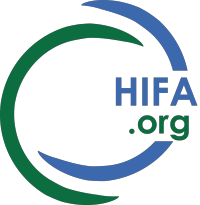Dear HIFA and HIFA-Zambia colleagues,
"Q1. Do people understand the health, socio-economic and environmental harms of using tobacco products? What matters to them? How can they be better informed?"
How can people be better informed? Citation and abstract of an interesting new paper in the journal Tobacco Control, and a comment from me below.
CITATION: Quasi-experimental evaluation of Kenya’s pictorial health warnings versus Zambia’s single text-only warning: findings from the International Tobacco Control (ITC) Project
Susan Cherop Kaai1 et al. Corresponding author: skaai@uwaterloo.ca
Tobacco Control 2023
https://tobaccocontrol.bmj.com/content/32/2/139
ABSTRACT
Background: Population studies in mostly high-income countries have shown that pictorial health warnings (PHWs) are much more effective than text-only warnings. This is the first quasi-experimental evaluation of the introduction of PHWs in Africa, comparing the change from text-only to PHWs in Kenya to the unchanged text-only health warning in Zambia.
Methods: Data were from International Tobacco Control (ITC) Surveys in Kenya (n=1495), and Zambia (n=1628), cohort surveys of nationally representative samples of adult smokers in each country. The ITC Kenya Survey was conducted in 2012 and 2018 (2 years after the 2016 introduction of three PHWs). The ITC Zambia Survey was conducted in 2012 and 2014 with no change to the single text-only warning. Validated indicators of health warning effectiveness (HWIs) (salience: noticing, reading; cognitive reactions: thinking about health risks, thinking about quitting; and behavioural reactions: avoiding warnings; forgoing a cigarette because of the warnings), and a summary measure—the Labels Impact Index (LII)—measured changes in warning impact between the two countries.
Results: PHWs implemented in Kenya led to a significant increase in all HWIs and the LII, compared with the text-only warning in Zambia. The failure to implement PHWs in Zambia led to a substantial missed opportunity to increase warning effectiveness (eg, an estimated additional 168 392 smokers in Zambia would have noticed the warnings).
Conclusions: The introduction of PHWs in Kenya substantially increased the effectiveness of warnings. These results provide strong empirical support for 34 African countries that still have text-only warnings, of which 31 are Parties of the Framework Convention on Tobacco Control and are thus obligated to implement PHWs.
COMMENTS (NPW):
1. From the WHO website: 'To address the tobacco epidemic, WHO Member States adopted the WHO Framework Convention on Tobacco Control (WHO FCTC) in 2003. Currently 182 countries have ratified this treaty.' It would be interesting to know which countries have not signed, and why.
2. 'Pictorial health warnings (PHWs) are much more effective than text-only warnings'. However, 'only 13 (Burkina Faso, Cameroon, Chad, Ethiopia, Gabon, Ghana, Kenya, Madagascar, Mauritius, Namibia, Senegal, Seychelles and Togo) out of 47 countries from the African Region have successfully implemented PHWs'. What can be done to accelerate progress towards universal pictorial health wornings?
3. I remember when pictorial health warnings first came out in the UK. They had a big impact. I have a few friends who smoke and they claim they now just ignore the pictures. How can pictures have the maximum impact? What types of pictures are especially effective in discouraging young people from taking up the habit, or in helping to persuade established smokers to quit?
Join HIFA: www.hifa.org/joinhifa
Join HIFA-Zambia: http://www.hifa.org/join/join-hifa-zambia
Best wishes, Neil
Co-chair, HIFA project on Mental health: meeting information needs for substance use disorders - Tobacco, Alcohol, Opiates https://www.hifa.org/projects/mental-health-meeting-information-needs-su...
HIFA profile: Neil Pakenham-Walsh is coordinator of HIFA (Healthcare Information For All), a global health community that brings all stakeholders together around the shared goal of universal access to reliable healthcare information. HIFA has 20,000 members in 180 countries, interacting in four languages and representing all parts of the global evidence ecosystem. HIFA is administered by Global Healthcare Information Network, a UK-based nonprofit in official relations with the World Health Organization. Email: neil@hifa.org

